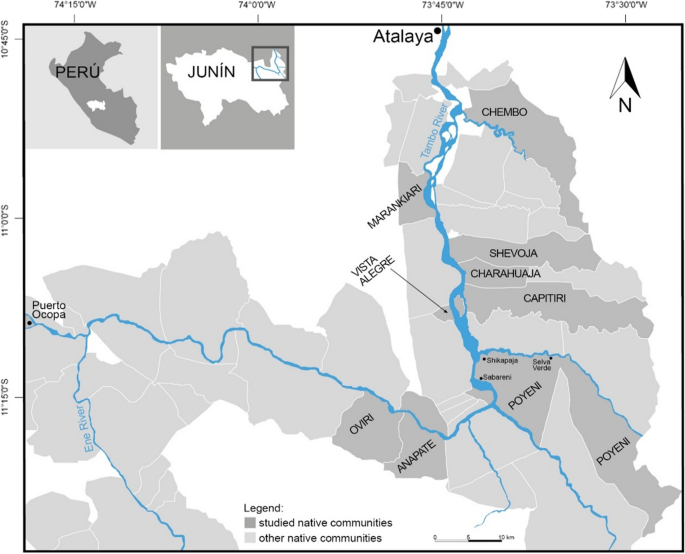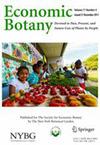阿沙宁卡亚马孙社会与棘科栽培植物的关系
IF 1.3
2区 生物学
Q2 PLANT SCIENCES
引用次数: 0
摘要
摘要本文讨论了秘鲁亚马逊地区阿沙宁卡人与阿沙宁卡人家庭花园中几种棘科植物所对应的ibinishi人种分类群之间的关系。关于棘科植物的栽培信息来自秘鲁上亚马逊河流域坦博河谷沿线12个土著社区的59个花园。这些数据是用一种超越效用的理论方法来解释的。Ibinishi,也被称为pinitsi,是阿沙宁卡人种植的仅次于ibenki(莎草属)的第二大药用植物群。结果表明,有3个属、1个属和1个属分别对应66个属。他们的名字是次要词汇,在他们的意义上,他们主要指的是幻象、灵魂、人类和动物巫师。广泛的使用范围与阿沙宁卡的病因有关,但在这些物种中发现的次生代谢物仅部分支持。在阿沙宁卡人中发现了ibinishi的民族医学现象,但在亚马逊地区说阿拉瓦克语的其他群体中没有发现。与人种学资料相比,ibinishi在阿沙宁卡人中的重要性似乎有所增加,这可能归因于该群体最近经历的武装冲突和社会动荡。本文章由计算机程序翻译,如有差异,请以英文原文为准。

The Relation Between Ashaninka Amazonian Society and Cultivated Acanthaceae Plants
Abstract The article discusses the relationships between Ashaninka people from Peruvian Amazonia and the ibinishi ethnotaxon corresponding to several species from the Acanthaceae family cultivated in Ashaninka home gardens. The information on cultivated Acanthaceae comes from 59 gardens in 12 native communities along the Tambo River valley in Peruvian Upper Amazonia. The data were interpreted with a more-than-utility theoretical-methodological approach. Ibinishi , also known as pinitsi , are the second major group of cultivated medicinal plants after ibenki ( Cyperus spp.) by the Ashaninka. An over-differentiation phenomenon is observed, in which three species of Justicia , one of Lepidagathis , and one of Ruellia correspond to 66 different ethnospecies of ibinishi . Their names are secondary lexemes, and in their meaning, they refer mostly to visions, spirits, and human and animal sorcerers. A wide scope of uses is connected to Ashaninka etiologies but only partly supported by the secondary metabolites found in those species. The ethnomedical phenomenon of ibinishi has been found among the Ashaninka but not among other Arawak-speaking groups in Amazonia. Compared to ethnographic sources, the importance of ibinishi seems to have grown among the Ashaninka, which may be ascribed to the armed conflicts and social unrest this group has gone through in recent times.
求助全文
通过发布文献求助,成功后即可免费获取论文全文。
去求助
来源期刊

Economic Botany
生物-植物科学
CiteScore
4.10
自引率
3.80%
发文量
25
审稿时长
>12 weeks
期刊介绍:
Economic Botany is a quarterly journal published by The New York Botanical Garden for the Society for Economic Botany. Interdisciplinary in scope, Economic Botany bridges the gap between pure and applied botany by focusing on the uses of plants by people. The foremost publication of its kind in this field, Economic Botany documents the rich relationship between plants and people around the world, encompassing the past, present, and potential uses of plants. Each issue contains original research articles, review articles, book reviews, annotated bibliographies, and notes on economic plants.
 求助内容:
求助内容: 应助结果提醒方式:
应助结果提醒方式:


